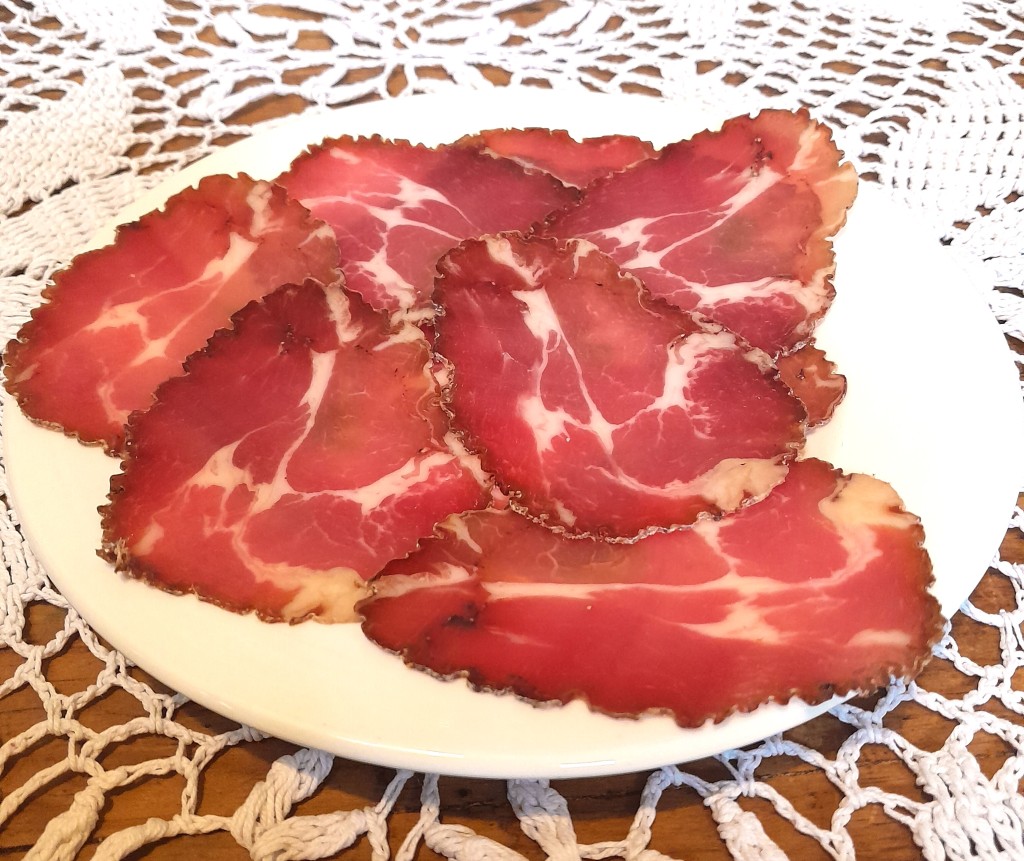
By this time of the year Pancetta stocks are almost depleted in the BYF pantry and the wheater being kind, new stock will be made soon
Get some nice thick pork belly (skin off and fat on!) hopefully raised free range and chemical free, or you may be lucky enough to shoot a nice young and fat wild pig
Trim the edges so as to have an almost uniform, in thickness, belly. Now cut the belly in managable sizes of about 300 mm X 200 mm
Mix the following ingredients per Kg of meat
2 Cloves Garlic – finely chopped
1 small sprig of Rosemary – finely chopped
3 g grated Nutmeg
3 g ground Black Pepper
1 g fresh Chilli (optional) – finely chopped
Mix the spices well and thoroughly rub it into the belly, covering all the cracks and crevices
Get a container large enough to lay out the pieces of meat in a single layer. Spread a thin layer of sea salt covering the bottom of the container, then lay the pieces of meat onto the salt and cover them completely with more salt in such a way that no meat is exposed. Place the container with meat in the fridge at about 3 – 5 C for 2 days. After 2 days, remove the salt, turn the meat over, drain off any fluid and cover with the same salt and return it to the fridge. If the belly is thin (about 25 – 30 mm) remove from the fridge and discard the salt after day 3. If the belly is thicker than 30 mm, leave for another day and remover from the fridge and discard the salt after day 4
Now rinse the bellies very well with cold running water and then wash with good red or white wine
Your Pancetta are ready to commence the curing process now by hanging them in such a way that they do not touch each other. Conditions must be about 15 C for the first week and then about 7 – 10 C until ready to use. Make sure the area is well ventilated, but NO DRAFT on the meat. The Pancetta should be rotated in such a way that uniform drying is achieved
After about 30 days, depending on the thickness, ventilation and temperatures of the Pancetta, they should be ready to taste and eat when you think they are ready and of the correct consistency – no harm in eating them too soon. Always remember to slice your Pancetta VERY thin. An old hand can tell when the Pancetta is ready by just feeling them
Once the consistency and moisture content is acceptable, vacuum pack and store in the pantry
The Pancetta can be enjoyed as is or in any cooking or fried, like bacon
Another version of pancetta can be made with the skin on and the pancetta rolled and tied
ENJOY and do not forget the home red wine to compliment the good Pancetta






